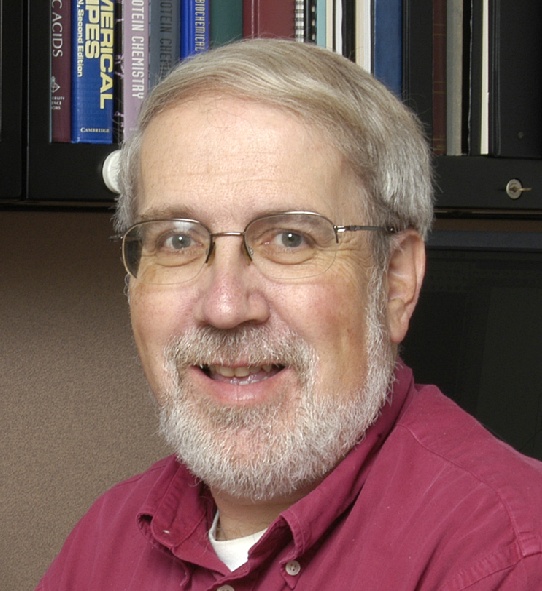Events: Details
| S | M | T | W | T | F | S |
|---|---|---|---|---|---|---|
| 1 | 2 | 3 | ||||
| 4 | 5 | 6 | 7 | 8 | 9 | 10 |
| 11 | 12 | 13 | 14 | 15 | 16 | 17 |
| 18 | 19 | 20 | 21 | 22 | 23 | 24 |
| 25 | 26 | 27 | 28 | 29 | 30 | 31 |
David Case (Rutgers) at HWI: CANCELLED
| Category: | Seminar |
|---|---|
| Description: |
THIS TALK HAS BEEN CANCELLED DUE TO HAZARDOUS WEATHER AND TRAVEL CONDITIONS. WE ARE IN THE PROCESS OF RESCHEDULING. Dr. David Case is a distinguished professor at Rutgers University. His research consists of the theoretical chemistry of biomolecules. Particular areas of interest include molecular dynamics simulations of proteins and nucleic acids; electronic structure calculations of transition-metal complexes that model active sites in metalloenzymes; development and application of methods for NMR structure determination; ligand-protein and ligand-nucleic acid docking and computational drug design. Dr. Case will be in Buffalo on March 22nd to give a talk based on his research. Details below. Date & Time: March 22nd, 2018 at 3PM EST Location: Hauptman Woodward Institute, 700 Ellicott Street, Buffalo, NY 14203 Room: Flickinger Lecture Hall 1F
What can we learn from MD simulations of biomolecular crystals?Case, David A. Dept. of Chemistry and Chemical Biology, Rutgers University, Piscataway, NJ 08854 USA The adaption of graphical processing units (GPUs) to biomolecular simulations has made microsecond-scale simulations of biomolecular crystals available on a nearly-routine basis [1-5]. Typically, a super-cell consisting of several crystallographic unit cells becomes the periodically-repeating unit in the simulation; in this talk, I will consider super-cells with up to 125 unit cells. Here are some ways this data might be used:
[1] D.S. Cerutti, P.L. Freddolino, R.E. Duke and David A. Case. Simulations of a protein crystal with a high resolution X-ray structure: Evaluation of force fields and water models. J. Phys. Chem. B 114, 12811-12824 (2010). [2] P.A. Janowski, D.S. Cerutti, J. Holton and D.A. Case. Peptide crystal simulations reveal hidden dynamics. J. Am. Chem. Soc. 135, 7938-7948 (2013). [3] C. Liu, P.A. Janowski and D.A. Case. All-atom crystal simulations of DNA and RNA duplexes. Biochim. Biophys. Acta 1850, 1059-1071 (2015). [4] P.A. Janowski, C. Liu and D.A. Case. Molecular dynamics of triclinic lysozyme in a crystal lattice. Prot. Sci. 25, 87-102 (2016). [5] A.H. Van Benschoten, L. Liu, A. Gonzalez, A.S. Brewster, N.K. Sauter, J.S. Fraser and M.E. Wall. Measuring and modeling diffuse scattering in protein X-ray crystallography. Proc. Natl. Acad. Sci. USA 113, 4069-4074 (2016). [6] S.P. Meisburger and N. Ando. Correlated Motions from Crystallography beyond Diffraction. Acc. Chem. Res. 50, 580-583 (2017). [7] K.A. Niessen, M. Xu, A. Paciaroni, A. Orecchini, E.H. Snell and A.G. Markelz. Moving in the right direction: Protein vibrational steering function. Biophys. J. 112, 933-942 (2017).
|
| When: |
Thursday, March 22 2018, 3:00 PM - 4:00 PM (ET) (UTC -05:00) Eastern Time (US & Canada), Bogota, Lima |
| Contact: | Erin Uppington at euppington@hwi.buffalo.edu or 716-898-8610 |
| Where: | Hauptman-Woodward Institute, 700 Ellicott Street, Buffalo, NY 14203 |
| Tags: |




